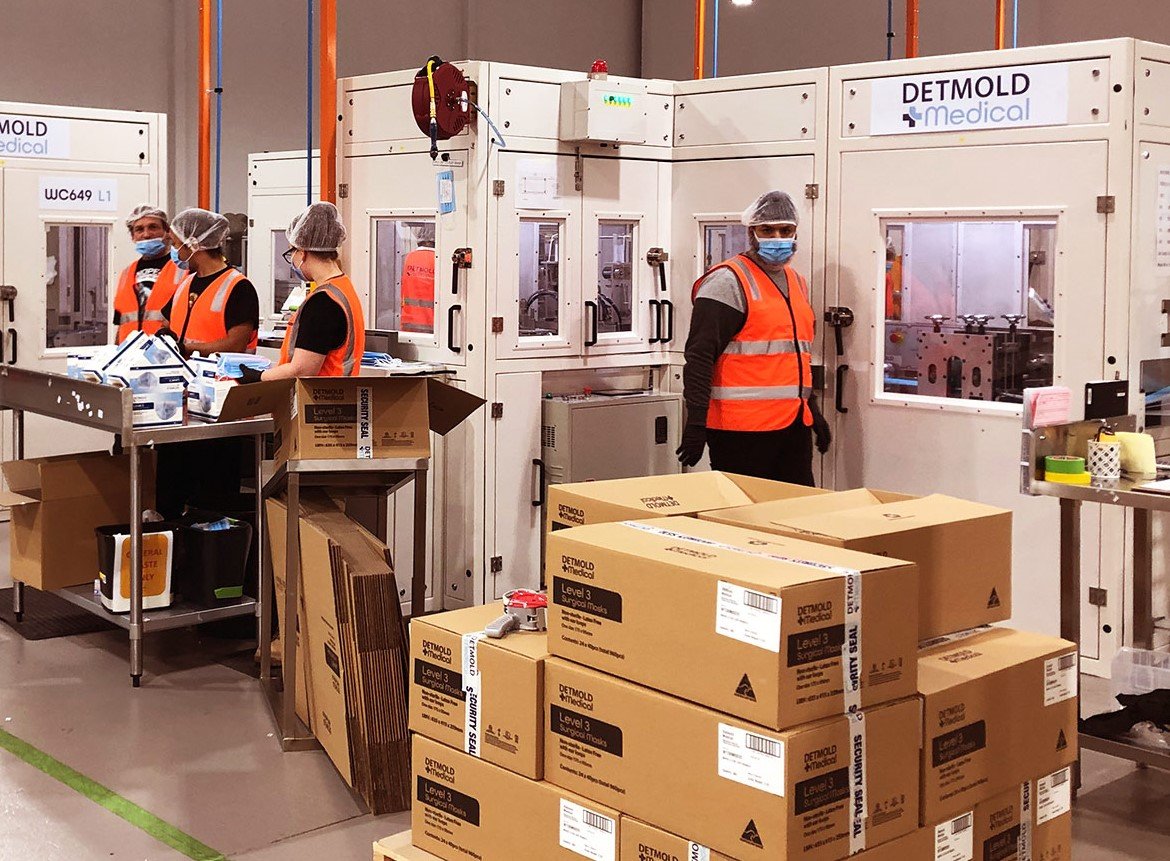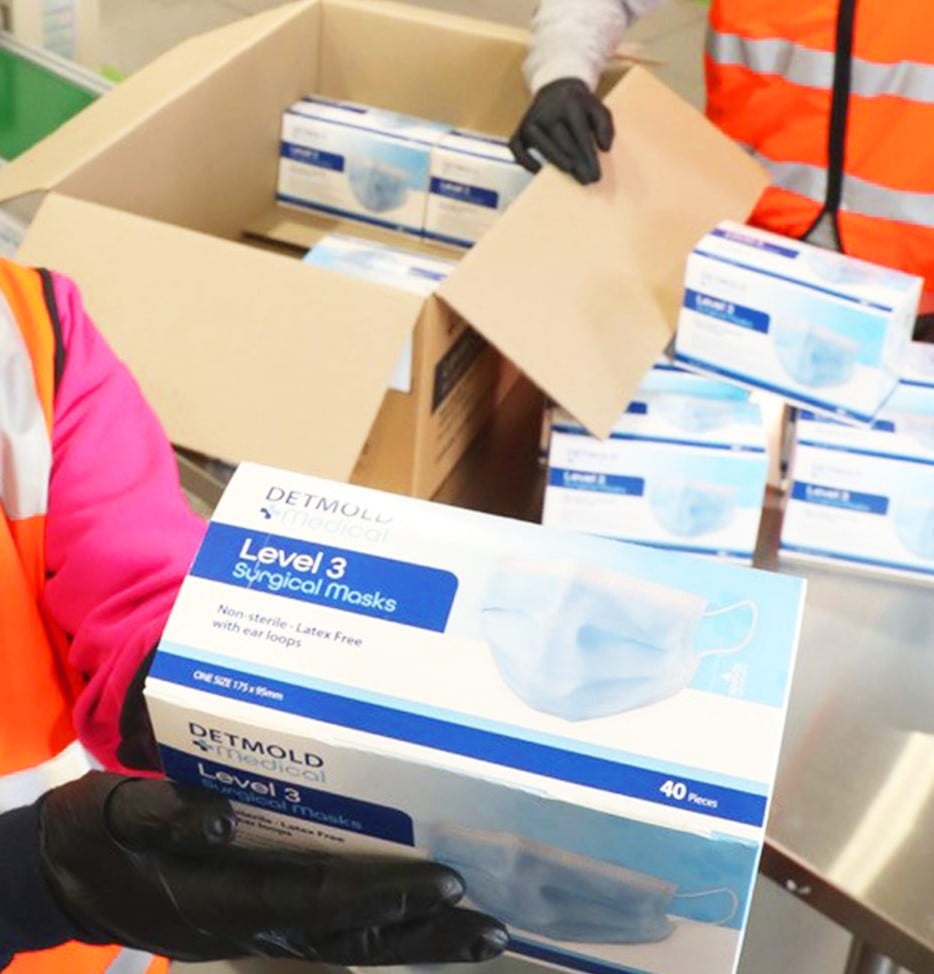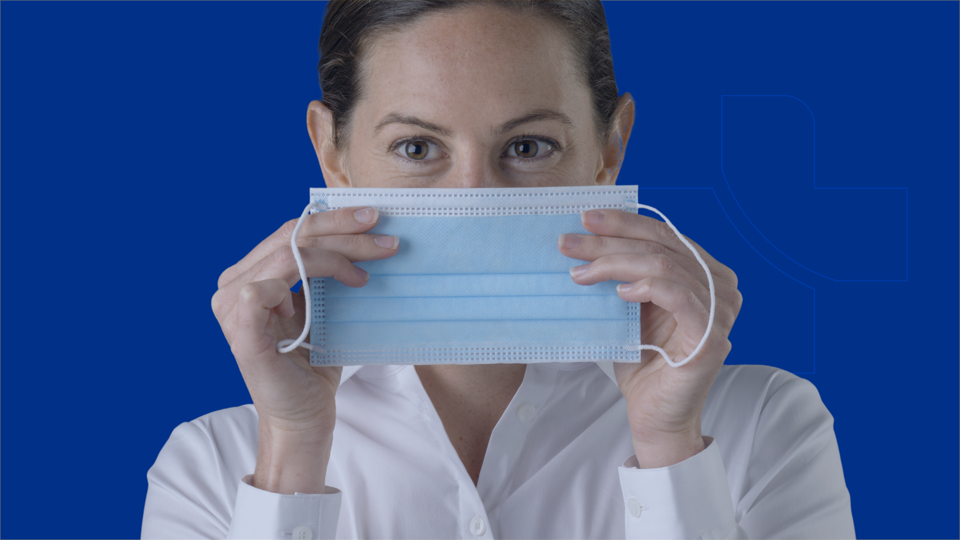Face masks provide a physical barrier, helping to reduce the risk of catching or spreading airborne illnesses and viruses. More specifically, medical face masks are designed for use in surgical or clinical environments with a low risk of fluid or blood splash. That said, the efficacy of medical face masks often depends on the storage conditions, with improper storage increasing the risk of contamination and impacting the mask’s ability to provide adequate protection.
Whether you're a healthcare professional, a business owner or someone who uses masks from time to time, knowing how to store them correctly can prevent contamination, prolong usability and ensure safety. Read on to learn more about the best practices for storing medical face masks so you can ensure the longevity of your masks while prioritising health and safety.

Why is it important to store medical masks correctly?
Proper storage of medical face masks is essential to ensure their effectiveness and maintain hygiene. Improper storage compromises the mask’s protective qualities and increases the risk of exposure to harmful pathogens.
Environmental factors, like moisture, sunlight and dust, can impact the effectiveness of face masks. Similarly, storing face masks with harmful substances, like cleaning products, can lead to mask contamination.
To ensure your face masks' effectiveness, following sterile mask storage practices is essential. Here’s how.
How to store medical masks
When it comes to storing medical masks, it’s generally recommended that you:
- Store face masks in a clean, dry place (<80% relative humidity) where they won't be crushed. Avoid using the mask if the packaging is damaged.
- Keep your face mask in the original packaging, as details such as the expiry date or date of manufacture are essential to determine a use-by date.
- Organise masks in sealed containers for an extra layer of protection.
- Place your mask away from direct sunlight, excessive moisture, extreme temperatures and hazardous chemicals (storage temperature should be between -20 C to +30 C).
- Ensure your face mask is readily accessible and convenient to you.
Most mask manufacturers provide information on how to store their masks on the original packaging, so be sure to follow their storage instructions.
It’s also important that you keep used and unused masks separate to minimise the risk of cross-contamination. Avoid this completely by correctly disposing of used masks once you’re done with them. When removing your face mask, avoid touching the front of your mask by using the ear loops or straps. Once the mask is safely off your face, cut the ear loops/straps before placing the mask in the general waste bin.
Common storage mistakes to avoid
Storing medical face masks incorrectly can significantly reduce their effectiveness and compromise hygiene. Here are six common mistakes to avoid when it comes to storing your medical masks:
- Leaving masks in unsealed containers: Storing masks in open or unsealed containers exposes them to dust, debris and other airborne contaminants. Always use airtight or resealable containers to keep unused masks clean and sterile.
- Storing masks in high-traffic areas: While face masks should be easily accessible, they shouldn’t be left in areas where they can come into contact with contaminants, like kitchen counters, bathrooms or crowded spaces. Choose a dedicated, low-traffic storage spot to minimise exposure to potential hazards.
- Mixing used and unused masks: Placing used masks with unused ones can lead to cross-contamination. Always separate clean masks from those that have been worn, using designated containers, compartments or resealable bags to prevent the spread of germs.
- Exposing masks to direct sunlight and moisture: Excessive sunlight and humidity can damage the material of medical face masks, reducing their protective capabilities. Store masks in a cool, dry area away from direct sunlight to maintain their integrity.
- Overcrowding storage containers: Storing too many masks into a single container can cause damage, compromising their fit and filtration efficiency. Instead, organise masks neatly and ensure there is adequate space to prevent compression.
- Ignoring the manufacturer’s storage guidelines: Masks manufacturers provide storage information to help you maintain the integrity of your face masks when they’re not in use, so be sure to follow their instructions.
Can I use face masks if they’re past their expiration date?
Medical face masks aren’t designed to last forever, so if you’ve still got a few masks on hand, it’s always worth checking the expiration date. In Australia, manufacturers are required to display the Year of Manufacture, a Date Code, or an alternative traceability marker on the outer packaging.
Most masks have a shelf life of three to five years, but it’s important to make sure your mask is still in date before you wear it, especially if you’re likely to come into contact with harmful pathogens. While you’re at it, be sure to check your face mask for any signs of moisture or damage, like stretched elastic bands and holes.

If your mask is damaged or past its expiration date, you’re probably better off swapping it for a clean, new mask to ensure the highest level of protection. If you’re in need of a fresh batch of face masks for your home or work environment, shop from Detmold Medical’s extensive range of high-quality face masks and respirators.




